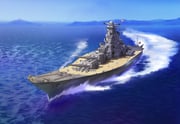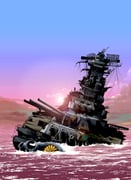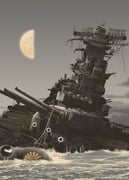battle of leyte gulf
The Battle of Leyte Gulf (Japanese: レイテ沖海戦, romanized: Reite Oki Kaisen, lit. Leyte Open Sea Naval Battle) was the largest naval battle of World War II and by some criteria the largest naval battle in history, with over 200,000 naval personnel involved. It was fought in waters near the Philippines islands of Leyte, Samar, and Luzon from 23 to 26 October 1944 between combined American and Australian forces and the Imperial Japanese Navy (IJN), as part of the Allied invasion of Leyte, which aimed to isolate Japan from the colonies that it had occupied in Southeast Asia, a vital source of industrial and oil supplies.
By the time of the battle, Japan had much fewer capital ships (aircraft carriers and battleships) left than the Allied forces had total aircraft carriers in the Pacific, which underscored the disparity in force strength at that point in the war. Regardless, the IJN mobilized nearly all of its remaining major naval vessels in an attempt to defeat the Allied invasion, but it was repulsed by the US Navy's Third and Seventh Fleets.
The battle consisted of four main separate engagements (the Battle of the Sibuyan Sea, the Battle of Surigao Strait, the Battle off Cape Engaño, and the Battle off Samar), as well as lesser actions. Allied forces announced the end of organized Japanese resistance on the island at the end of December.
It was also the first battle in which Japanese aircraft carried out organized kamikaze pilot attacks (which were deadly effective and sunk many Allied ships), and it was the last naval battle between battleships in history. The battle ended in a decisive victory for the Allies. The Japanese Navy suffered heavy losses and never sailed in comparable force thereafter since it was stranded for lack of fuel in its bases for the rest of the war.





